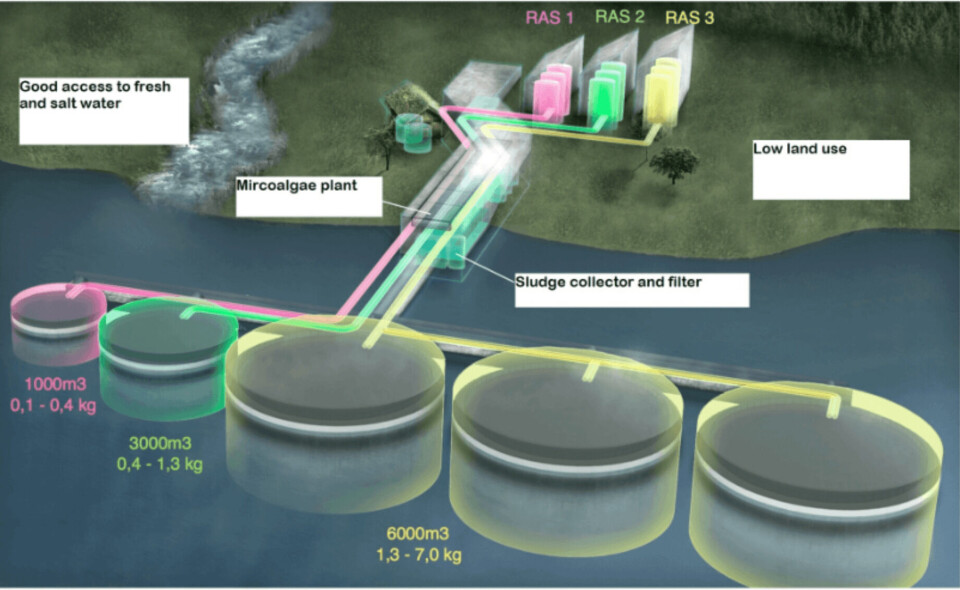
From Salmon Zero to hero? Lifeline for fish farm concept
A Norwegian salmon farmer has been given fresh hope of winning licences to develop a farm in which fish are grown in closed tanks in the sea, with water being pumped on to land for treatment.
Eide Fjordbruk’s application for three development permits for its “Salmon Zero” concept was rejected in December 2017 because the Directorate of Fisheries ruled that the project did not fulfil the condition of “considerable innovation”.
The company complained about the decision to the Directorate of Trade and Fisheries, which has now accepted that the project does meet the innovation criterion.
Further consideration
“The case is returned to the Directorate of Fisheries for further consideration, including assessment of whether the conditions for significant investment have been met,” said the Trade and Fisheries Directorate in its ruling.
The Salmon Zero concept is described as a fully enclosed sea system with full recycling of production water. The plant will produce mature fish for harvest at a weight of about 6.5kg.
Production is to take place in closed cages in the sea. The recycling and water treatment systems are to be mainly located on land, with parts of the water treatment integrated into the production units. The plant will be modular and can be scaled up or down as needed.
Recirculation on a barge
In the longer term it should be possible to move all installations to sea, with recirculation facilities on board a suitable barge.
Eide Fjordbruk AS farms in Hardangerfjord, Fensfjorden and Osterfjorden in Hordaland, and produces around 12,000 tonnes of salmon and rainbow trout a year.
In January 2013, it was awarded one of five companies awarded R&D licences for large-scale trial production of triploid (sterile) salmon.
R&D production takes place in close cooperation with ova provider and genetics specialist Aquagen and Norway’s Marine Research Institute.




















































